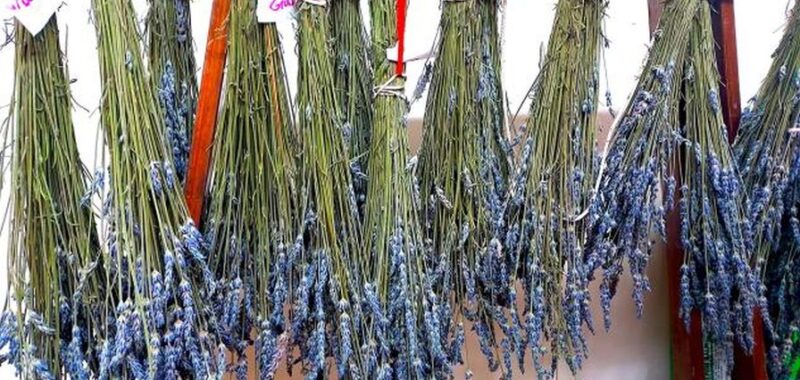The Popularity of Lavender
Lavender has been a popular flower, and scent, for thousands of years. Indigenous to India, the Mediterranean, and the Middle East, travelers to the region helped to rapidly spread its presence throughout the world, including to America from European settlers, according to High Country Gardens.
Lavender has many uses. While some of its health benefits are still speculative, tests and trials have shown that lavender may be useful for treating insomnia, anxiety, headaches, and various skin conditions, such as burns and eczema, according to Healthline. Other applications of lavender include its use in perfumes, aromatherapy, tea, soaps, lotions, and of course, as decorative flowers, whether dried or fresh.
Additionally, lavender has plenty of benefits before its harvest.
“Fresh lavender plants will keep a garden fragrant as well as attract a variety of pollinators like bees, butterflies, praying mantis, and others,” says MU Extension horticulturist Jennifer Schutter. “In urban settings where the population of natural pollinators, including bees and butterflies, is on a decline, lavender plants offer an invaluable attraction to these species.”
Furthermore, while lavender’s fragrance aids in attracting pollinators, it also has the positive effect of repelling many common and annoying pests, such as mosquitoes.
Problems with Growing Lavender
Despite its prevalence in the horticulture market, lavender can struggle to thrive due to various environmental circumstances.
Water, in particular, has been a bane of the lavender plant. Conditions such as excessive rainfall, flooding, and moisture, can be very detrimental to its growth. Growers are encouraged to have lavender in raised containers with overhead protection from rain and proper drainage systems. Additionally, watering and irrigation system routines should be adjusted to prevent overwatering.
Another area of concern is the cold, which is of great concern for northern Missourians. Uncovered lavender plants can easily die, suffer from severe dieback, or require extensive pruning after winter seasons.
For these reasons and more, the diverse regions of climate and topography in Missouri have posed exceptional difficulties to lavender growth. This has prompted a research project by horticulture specialists from the MU Extension. After three years of research, they’re starting to have success.
Research on How to Best Grow Lavender in Missouri
MU Extension research tested lavender plots in four different locations within the state, with a variety of cultivars, for more than three years. Those locations are as follows:
- Springfield Botanical Garden in Springfield, MO
- MU’s Extension Center in Ste. Genevieve, MO
- MU’s Southwest Research Center in Mount Vernon, MO
- Various areas in Kirksville, MO
Spanish varieties of lavender did not survive the course of Missouri winters, while others suffered from high humidity during summer months. The research found that six particular cultivars performed the best in the state:
- Dutch Mill
- Grosso French
- Hidcote English
- Munstead English
- Phenomenal
- Provence
However, despite the continued success of the project, horticulturist Katie Hammler says the unpredictability of Missouri’s climate can cause very different responses among cultivars. MU horticulturists as a whole recommended that lavender growers should plan for up to 25% loss each season.
So, what’s next for MU extension’s research on the perennial? Horticulturist Patrick Byers says the plan is to find ways for lavender to boost the state agricultural economy through tourism and products. Additionally, researchers involved in the project plan to release a guide on lavender growing in the spring.

